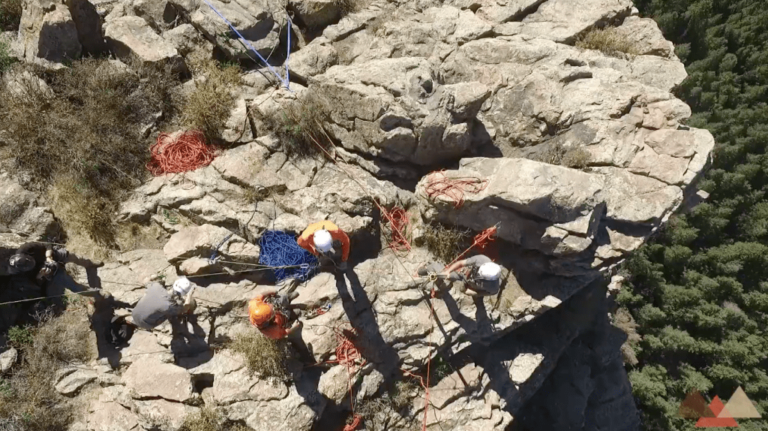The National Fire Protection Association (NFPA) is renowned for setting standards that ensure the safety and efficiency of emergency services. Among these, NFPA 2500, titled “Standards for Operations and Training for Technical Search and Rescue Incidents and Life Safety Rope and Equipment for Emergency Services,” stands out as a critical framework. This standard consolidates several previous guidelines into a single, cohesive document, streamlining the procedures and training required for technical search and rescue (SAR) operations and the use of life safety rope and equipment. NFPA 2500’s comprehensive nature and global recognition make it indispensable for emergency responders and organizations dedicated to public safety.
1. Search and Rescue Strategies
Technical search and rescue operations are complex and require meticulous planning and execution. NFPA 2500 provides a detailed guide on SAR strategies, emphasizing the need for structured methodologies and principles to ensure effective outcomes.
- Methodologies and Principles: The standard outlines various strategies such as grid searches, line searches, and pattern searches, each suited to different environments and scenarios. For instance, in urban search and rescue, grid searches are often employed to systematically cover areas of collapsed structures.
- Technology Integration: The standard also highlights the integration of advanced technologies such as drones, thermal imaging cameras, and ground-penetrating radar to enhance search capabilities and improve the speed and accuracy of locating victims.
- Team Coordination: Effective coordination among SAR teams is crucial. NFPA 2500 emphasizes the importance of clear communication channels, role assignments, and the use of incident command systems (ICS) to manage SAR operations efficiently.
2. Incident Management
Managing SAR incidents requires a well-structured approach to ensure that all aspects of the operation are covered and resources are utilized effectively.
- Roles and Responsibilities: NFPA 2500 defines the specific roles within an incident command structure, including incident commanders, safety officers, and logistics coordinators. Each role has distinct responsibilities to ensure the smooth execution of SAR operations.
- Incident Command Systems (ICS): The standard promotes the use of ICS, a standardized approach to the command, control, and coordination of emergency response. ICS ensures that all team members are aware of their roles and can communicate effectively.
- Communication Protocols: Effective communication is key to managing SAR incidents. NFPA 2500 outlines protocols for establishing communication channels, both within the SAR team and with external agencies, to ensure a cohesive response effort.
3. Training and Qualifications
Continuous training and certification are fundamental to maintaining high standards in SAR operations. NFPA 2500 places significant emphasis on the training and qualifications required for responders.
- Core Competencies: The standard specifies the core competencies that SAR personnel must possess, including knowledge of rescue techniques, equipment use, and safety procedures. This ensures that all team members are equipped to handle various SAR scenarios.
- Ongoing Training: NFPA 2500 mandates regular training sessions to keep responders updated on the latest techniques and technologies. This includes scenario-based training, workshops, and refresher courses.
- Certification Requirements: The standard outlines the certification process for SAR personnel, ensuring that they meet national and international standards. This includes both initial certification and recertification requirements to maintain proficiency.
4. Equipment Selection and Use
Selecting and using the right equipment is crucial for the success of SAR operations. NFPA 2500 provides comprehensive guidelines on equipment selection, use, and maintenance.
- Types of Equipment: The standard categorizes equipment into various types, such as personal protective equipment (PPE), communication devices, and specialized rescue tools. It provides detailed specifications for each type to ensure reliability and safety.
- Inspection and Maintenance: Regular inspection and maintenance of equipment are vital to ensure its functionality during operations. NFPA 2500 outlines maintenance schedules, inspection procedures, and criteria for retiring equipment that is no longer safe to use.
- Proper Usage: Training on the correct use of equipment is essential. The standard includes guidelines on how to use different types of equipment safely and effectively, minimizing the risk of accidents during SAR operations.
5. Safety Protocols
Safety is the cornerstone of any SAR operation. NFPA 2500 establishes stringent safety protocols to protect both responders and victims.
- Hazard Recognition: The standard provides detailed guidelines on recognizing potential hazards in various SAR environments, such as structural collapses, confined spaces, and hazardous materials.
- Safety Measures: NFPA 2500 outlines specific safety measures, including the use of PPE, establishing safety zones, and implementing safety checks before, during, and after operations.
- Incident Scene Safety: Maintaining a safe incident scene is crucial. The standard includes protocols for scene assessment, hazard mitigation, and the establishment of safety perimeters to protect responders and victims.
6. Rope and Equipment Maintenance
Life safety rope and related equipment are critical components of SAR operations. NFPA 2500 provides detailed guidelines on their maintenance and inspection.
- Maintenance Schedules: The standard outlines specific maintenance schedules for various types of equipment, ensuring they remain in optimal condition. This includes regular inspections, cleaning, and proper storage.
- Inspection Procedures: Detailed inspection procedures are provided to identify wear and tear, damage, and other issues that may compromise equipment safety. The standard also includes criteria for determining when equipment should be retired.
- Documentation: Keeping accurate records of equipment inspections and maintenance is essential for accountability and safety. NFPA 2500 specifies the documentation required for tracking the condition and history of each piece of equipment.
7. Documentation and Reporting
Accurate documentation and reporting are crucial for post-incident analysis and continuous improvement in SAR operations.
- Incident Reports: NFPA 2500 outlines the required components of incident reports, including details of the operation, equipment used, personnel involved, and any challenges encountered.
- Equipment Logs: Maintaining logs of equipment inspections, maintenance, and usage is essential for tracking the lifespan and safety of each item. The standard specifies the format and content of these logs.
- Training Records: Keeping records of training sessions, certifications, and ongoing education is vital for ensuring that all personnel meet the required standards. NFPA 2500 provides guidelines for maintaining comprehensive training records.
The Significance of Consolidation
A notable aspect of NFPA 2500 is its consolidation of three previously separate standards: NFPA 1670, NFPA 1858, and NFPA 1983. This unification simplifies the landscape of emergency service guidelines, making it easier for responders and organizations to access and implement these essential standards. The consolidation is part of NFPA’s broader initiative to reduce over 100 individual standards into fewer than 50 by 2025, demonstrating a commitment to streamlining and simplifying safety protocols.
Global Impact and Adoption
NFPA 2500’s influence extends beyond national borders, with many countries and international organizations recognizing and adopting it as a benchmark for emergency response. This global recognition promotes consistency and collaboration, enhancing the efficiency of emergency services worldwide. By adhering to a single, consolidated standard, responders can seamlessly collaborate, even across different jurisdictions and agencies.
Summary
NFPA 2500 is a pivotal standard that significantly impacts the field of emergency services. By providing a comprehensive set of guidelines for technical SAR operations and the use of life safety rope and equipment, it ensures the safety and proficiency of responders. The consolidation of multiple standards into NFPA 2500 streamlines procedures, making it easier for organizations to implement and maintain these crucial guidelines. As a globally recognized standard, NFPA 2500 fosters consistency and collaboration, ultimately enhancing the effectiveness of emergency response efforts. For emergency services personnel and organizations, adherence to NFPA 2500 is not just a recommendation but a necessity for ensuring safety, efficiency, and professionalism in their operations.










